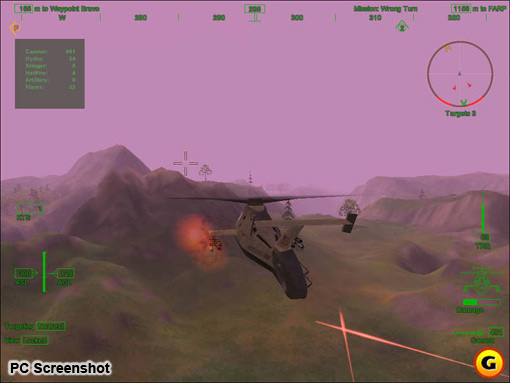

However, if the Comanche was sent out to hunt for other attack and reconnaissance helicopters behind enemy lines, it could wreak havoc with 12 AIM-92 Stinger air-to-air missiles. If air superiority had been established and stealth was no longer a pressing concern, additional external pylons could carry eight more Hellfires.

Like the stealth fighters to come, the Comanche limited its radar cross-section by carrying its weapons internally, including a retractable 20-mm XM301 Gatling cannon and space inside the weapons bays for six Hellfire missiles. The stealth helicopter was expected to engage both ground and air targets in a combat zone, and its munitions reflected that goal.

With the Comanche's stealth technology spoken for, next came the armament. While the rotorcraft could still be heard as it approached, that reduced signature would mean enemy combatants would have less time to prepare before the Comanche closed in on them. The Comanche helicopter was also said to produce just half the noise of a traditional helicopter.

It wasn't just tough to spot on radar or hit with heat-seeking missiles either. The result of all this technology was a stealth helicopter said to have a radar cross-section that was 250 times smaller than the OH-58 Kiowa helicopter it would replace, along with an infrared signature reduced by a whopping 75%.
#Comanche helicopter sim full
Finally, a full suite of radar warning systems, electronic warfare systems, and chaff and flare dispensers would help keep the RAH-66's crew safe while they rode behind Kevlar and graphite armor plating that could withstand direct hits from heavy machine gunfire. Its specially designed rotor blades were canted downward to reduce the amount of noise the helicopter made in flight. The stealth helicopter also managed engine exhaust by funneling it through its shrouded tail section, reducing its infrared (or heat) signature to further limit detection. Those surfaces themselves were made out of radar-absorbing composite materials to further reduce the RAH-66's radar signature. The Boeing-Sikorsky team quickly set about building the program's first two prototypes, leveraging the sort of angular radar-reflecting surfaces that gave the Nighthawk its enigmatic visual profile. The program's intended aim was fairly simple despite the complexity of the effort: To field a single rotorcraft that could replace the UH-1, AH-1, OH-6, and OH-58 helicopters currently parked in Army hangars. With the Soviet Union was believed to still be funneling a great deal of money into their own advanced military projects, the US Army set to work on finding a viable replacement for their fleets of Vietnam-era light attack and reconnaissance helicopters in its forward-looking Light Helicopter Experimental (LHX) program. However, elements of America's defense apparatus were beginning to look a bit long in the tooth after decades of posturing, deterrence, and the occasional proxy war. The US has long led the world in stealth technologies, and for a time, it looked as though America's love for all things low-observable would extend all the way into rotorcraft like the RAH-66 Comanche helicopter.ĭespite being only a decade away from ruin, the Soviet Union remained a palpable threat to the security and interests of the United States at the beginning of the 1980s. Account icon An icon in the shape of a person's head and shoulders.


 0 kommentar(er)
0 kommentar(er)
